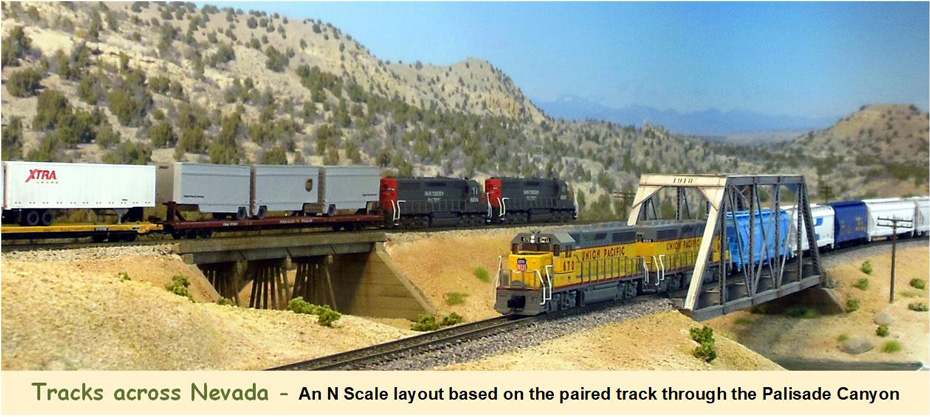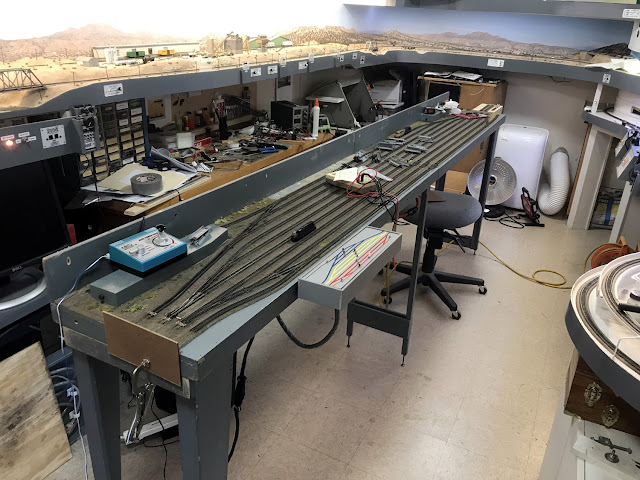In a post earlier this year, I reported about a Digitrax DS64 that had inputs that were no longer working. I had replaced the DS64 with a control circuit I built myself. This was on my WP staging yard. Recently I have been having some issues with the circuit that controls the SP yard as well.
Specifically, the turnout at the wye that creates the return loop would sometimes cause the turnouts that control the siding on the return track to switch. As this wye turnout can be triggered by a train passing a sensor while the train is still passing through the siding turnouts, this would cause a derailment.
The turnouts on this staging yard are controlled by three different circuits as shown in this photo. One controls the yard ladder, another the wye turnout and the third controls the siding turnouts.
I suspected that some sort of noise was getting onto the input connections of the board that controls the siding turnouts. This was confirmed by monitoring the inputs with an oscilloscope. The inputs to the circuit are normally high at +12 volts and when the buttons are pressed or the IR sensor activated, they go low to 0 volts. On the oscilloscope it could be seen that spikes were randomly occurring when the wye turnout motor was running and occasionally when the spike was large enough the inputs to the siding control board were being activated.

What was happening here was that arcing between the motor's commutator and brushes on the wye turnout were creating these spikes and the magnetic field from those spikes on the motor wires was being picked up by the input wires on the siding control circuit. Notice in the photo of the circuits how many of the wires are bundled together. This can contribute to this happening as can the age of the motors. The Tortoise motors on this layout range in age from 9 to 30 years old. When I built this staging yard 9 years ago I twisted the motor wires which is supposed to help eliminate this problem and it did for a long time.
After reviewing several YouTube videos and some experimenting at the work bench I found the most effective solution was to suppress the noise as close to the source as possible. I added a .01uf ceramic disc capacitor from each motor lead to the case of the motor. After removing the motor from the Tortoise case, a pair of .039 holes were drilled in the circuit board at the locations pointed out with green arrows in the photo below.
One lead of the capacitors were soldered to the case as shown in this photo. To get a solder connection to the case I first scraped that spot on the case with a file and used flux and a hot soldering iron. The other lead of the capacitors went through the holes in the board.
Then the leads that went through the holes in the circuit board were trimmed and soldered to the circuit traces as shown in this photo.
The placing of the capacitors this way prevents them from interfering with any of the moving parts inside the Tortoise housing and avoids the center screw mounts.
A recheck of the siding control inputs with the oscilloscope after the capacitors are installed shows a cleaner voltage with any spikes being very small. After repeated testing, everything is working fine now. I am now wondering if it was these voltage spikes that caused the inputs on the DS64 to fail.



















































